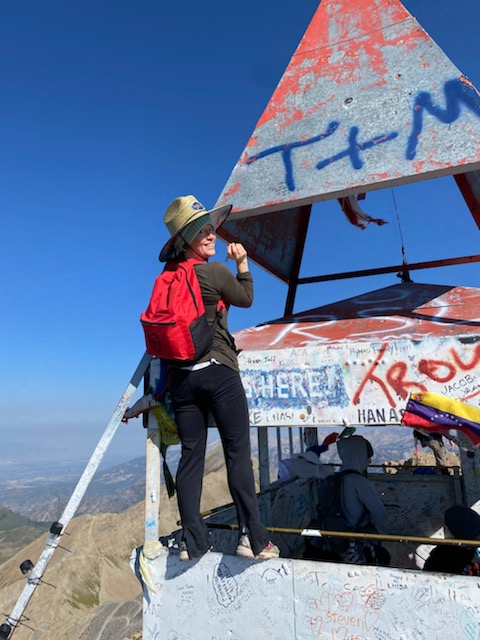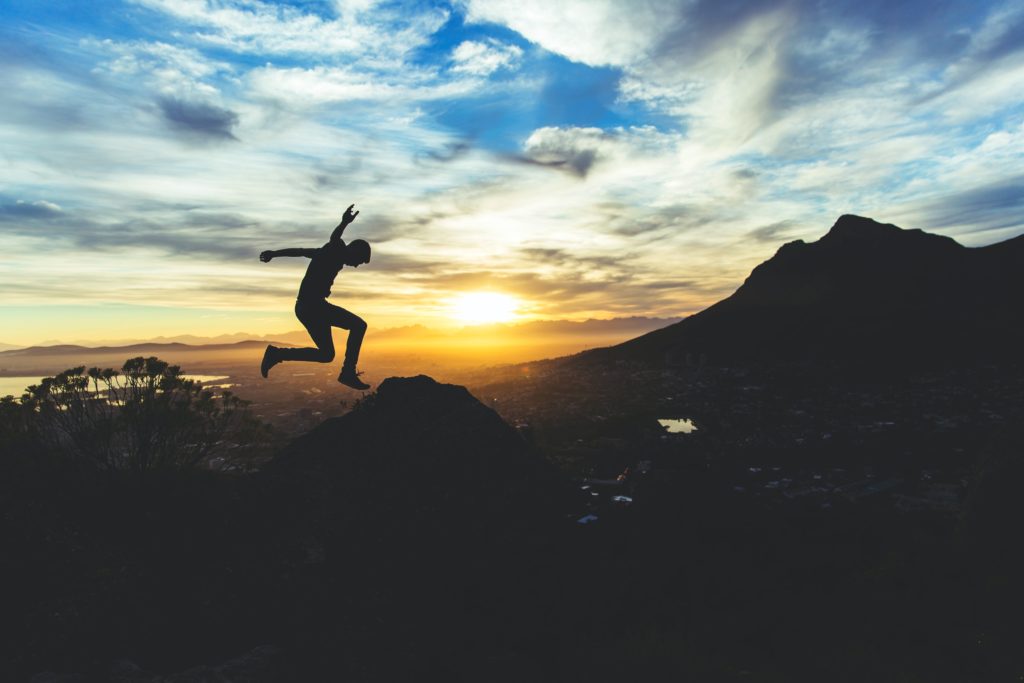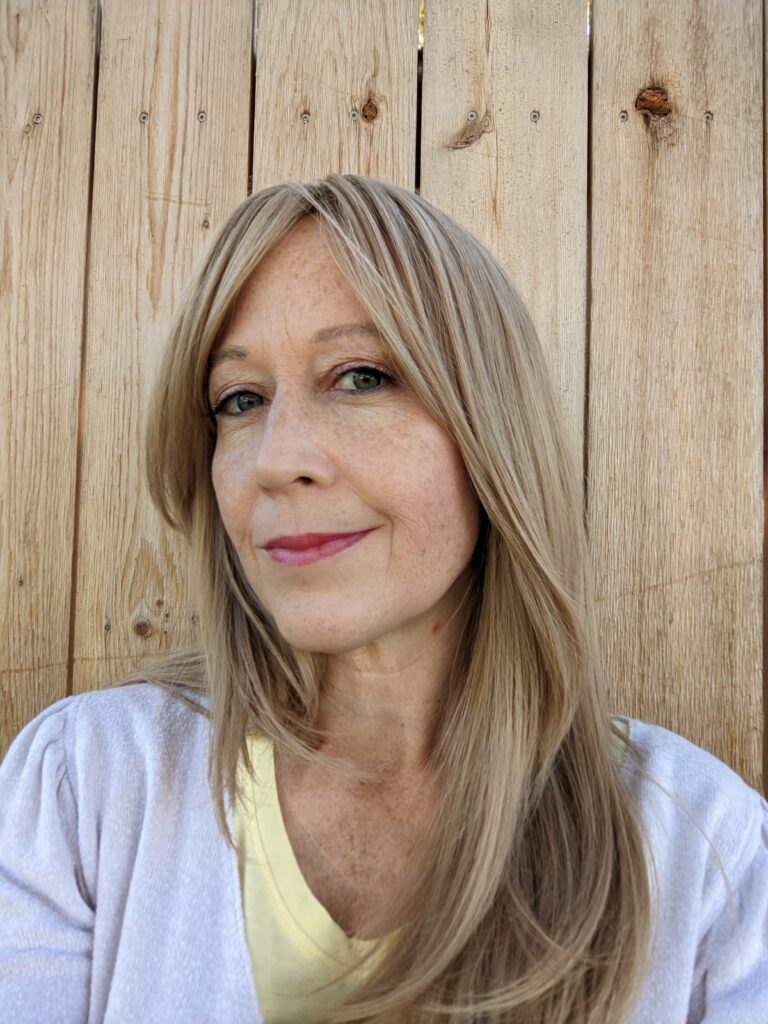When 9/11 happened, I was on my mission. I had been serving in Covington, Louisiana for about a month, and I was just starting to get the hang of living with my very driven and exacting companion. It was early in the morning, and one of the people we were teaching (a man named Wall), called us and told us what was going on. He knew that we couldn’t turn the television on (we didn’t have one) and that even if we had one, we couldn’t watch it.
He said that someone had bombed the twin towers. That it was an act of war.
Immediately, I thought of my boyfriend at the time being drafted into active duty. I was scared for him and concerned. It was all very hypothetical, though. Very surreal. It wasn’t something I watched. I didn’t really know what was happening.
Throughout that day, we went about our lives. We went to houses and tried to teach. On every television was the live coverage of what was going on in New York. I remember being in one woman’s house, trying to watch “The Lamb of God”—a VHS cassette tape about the death and resurrection of Jesus Christ—that a woman had ordered from a free ad on the television. As we waited, the television showed a tower smoking. I averted my eyes so that I couldn’t watch it, but I knew it was there.
It wasn’t until a year and a half later that I had access to watching any of the events of that day. And, even then, I didn’t have easy access. I didn’t have internet. My parents didn’t own a television. By that time, a lot of the initial shock had worn off for the rest of the world and it wasn’t something that everyone was talking about, making movies about, or writing about. I kind of went on with my life, not ever really knowing what it was like to live in the world on that day.
A week ago, I decided that, on the 20th anniversary of this terrible event, I would finally participate in experiencing what so many people experienced on September 11th of 2001. I watched a documentary that was designed based on individuals’ experiences, told by them in a small, private box set up in Washington, D.C., New York, and Pennsylvania.
It was moving and interesting. But what I was unprepared for was the sheer horror of seeing the first tower fall, knowing who was in it, and knowing that the other was going to come down as well.
In that movie, there was a New York dance choreographer who talked about the trauma of watching people jump from that second tower. He talked about their bodies—how they moved as they fell.
I have to admit, I wanted to see it. In some terrible way, I wanted to experience that most horrible part as people were forced to choose between the fire and the fall.
But as I considered digging in deeper to find footage of this, I felt a very strong internal voice saying that I needed to stop. That seeing that part of this tragedy was not for me, that it had never been for me, and that it was possible it would fundamentally change the way that I see the world and relate to it.
The issue is, sometimes, you are caught between the fire and the fall. I mean, here I am with cancer. Norm MacDonald, a very famous comedian who was influential when my generation was growing up, recently just died from cancer. He knew it was coming, and even made dying of cancer a part of his stand-up routine over the last few years of his life (even though most people didn’t know he had it). He could see the fire of impending death coming, but chose to laugh in its face just as some people who jumped from that tower chose to flap their arms or pretend to be sitting in a chair.
Death comes, sure. But there is some power in choosing to find the last scrap of joy at the bottom of that bitter cup.
I have always wondered what kind of person would choose to jump. I suppose it’s different from person to person. Faced with two options—to wait for things to take their natural course or to take hold of the last few minutes of your life and have one last adventure—I’ve wondered what I would do.
On Friday morning, I got up at 4 a.m. to hike to the top of Mount Timpanogos. I am now vegan, so I didn’t have the carbo-loading that some other might have had beforehand. I did pack 35 pounds of water and trail mix to ensure I didn’t starve to death or dehydrate. We walked up and up and up, through valleys of darkness and star and up a trail that seemed to last forever. After 4 hours of walking up, my legs were screaming and I thought I might have to go back. But I didn’t. I kept walking up. I kept stepping forward. And when some people stayed behind, looking at the view from just below the summit, I kept going up and up; over boulders, up a mountain face, climbing against the protests of every part of my body—over 4000 feet higher than where I started.

Jennica, Ashlee, and I at the Mt. Timpanogos saddle. 
Me on the tippy-top of the mountain.
Being at the top of the mountain was awesome. But that’s not why I did it. I did it because I wanted to have the adventure. I wanted to say that I’d done it. And when I hiked back down the mountain (14 miles, round trip), I was done hiking long before that walk was done.
On Saturday, the next day, my brother invited me to go to a zipline course in Provo. My legs, still shaky and strained from Friday’s long jaunt, tried to tell me that it wasn’t a good idea, but I ignored them.
One of the most interesting things we did at the zipline park was something called the “Leap of Faith.” A person climbs to the top of a 40-foot platform and jumps off, attempting to catch and hold a large metal ring that is situated 10 feet away from and 3 feet vertical to the jumper.
My brother went first, psyching himself up and leaping towards the ring with all of his 5’11” of man-body. He grabbed it perfectly, completely dominating the event. What an amazing thing to say that you’ve done! He caught the ring—something that not everyone can do.
I climbed up, my legs shaking, my body complaining (my mouth complaining as well, making it very clear that “I had a lot of soup” before coming and encouraging onlookers to back up in case it decided to make a repeat appearance). But when I got to the top of the platform, I wasn’t scared. Even though the ring was impossibly far away for someone whose legs were barely functional, I knew that there was someone below to catch me. And with everything I had, I jumped for that ring…
What was important was what the man in charge of the safety rope said when I asked him if it could be done by someone as small as me. He said: “It’s not really about catching the ring. It’s about the feeling of jumping.”
It reminded me of a lesson I had learned years ago. I had been faced with a very difficult task—moving my entire 2000+ square foot house from Colorado to Oregon by myself. As I had contemplated this, I was nervous. There were many things I had no control over and didn’t know how I was going to do. I had a vision of myself standing at a window of a tall building. The thought that accompanied it was this: The difference between fear and exhilaration is knowing that there is someone who will catch you when you jump.
There it is. We are constantly faced with terrible decisions, terrible circumstances that force our hand. The flames or the fall? But we have this choice, always, to do so with vigor—taking the leap with all our heart KNOWING that we can’t catch that ring, knowing that there is no one but the invisible hand of God to catch us.
On September 11th, 2001, there were people who jumped and there were people who didn’t, and I don’t think either one of them were wrong.
For me, I would hope that—knowing the odds were not in my favor—I might have looked at the flames and the sky and at least considered having one last, amazing story before my time on earth was done. I hope I would have jumped for the ring, knowing I couldn’t catch it, for the sheer exhilaration of feeling as though I could fly. Because that is what makes the difference—knowing that there is a hand somewhere—impossibly close, strong as the wind—to lift you up and away, turning every fall into flight towards the next part of your eternal adventure.


